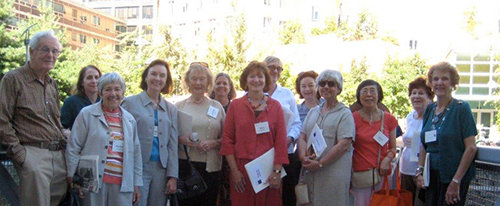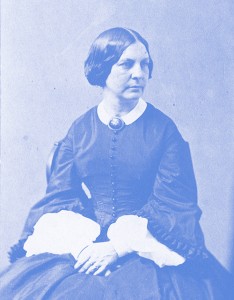Emma Rogers Society Provides Lifelong Links
-
-
slice.mit.edu
Filed Under
Recommended

Guest blogger: Nancye Mims, MIT Alumni Association
The 25th anniversary celebration of the Emma Rogers Society (ERS) on May 13 marks a quarter century of the extraordinary connection between widows and widowers of alumni and faculty and MIT. Both the Institute and surviving spouses are enriched by these ongoing interactions.
The group is named for Emma Savage Rogers (1824-1911), the wife of MIT’s founder, William Barton Rogers. The daughter of a wealthy Boston banker and businessman, she married Rogers in 1849. Known for her intellect and vitality, she became a model of long-term engagement with the Institute. As his health began to fail, her unflagging support—including acting as an intermediary with faculty and colleagues—was a constant in their relationship and in his leadership of MIT.
After President Rogers passed away during commencement ceremonies in 1882, Mrs. Rogers continued to be a valued advisor to four MIT presidents and generously opened up her home and her heart to students, teachers, and alumni until her death in 1911.

Inspired by Mrs. Rogers and many examples of highly engaged spouses, MIT President Paul Gray and his wife, Priscilla, began working with Vice President and Treasurer Glenn Strehle to find a way that MIT could formally address the needs of such spouses in 1989.
“MIT has always been like a big family in so many ways and surviving spouses are just as important to that family as they were in earlier years,” says Mrs. Gray.
Strehle hired Betsy Millard to gather alumni and faculty widows to discuss what this kind of outreach might look like. After a survey and much collaboration, ERS was launched in 1990 to be of service to widows of alumni and faculty, make them feel welcome on campus, and keep them connected to the Institute.
After Charles M. Vest succeeded Paul Gray as president of MIT in 1990, his wife Rebecca M. Vest was honorary chair of ERS for many years, often hosting ERS activities at Gray House. When Dr. Vest passed away in 2013, she became a member herself.
Today, there are more than 5,000 members of the Emma Rogers Society around the globe. The group meets in the Boston area three to five times a year for events such as the ERS Insider Series. Similar lecture-and-luncheon events are scheduled during Tech Reunions and sometimes in other locations and times.
Besides keeping up with MIT research, group members also support one another. “The group does not formally talk about grieving and loss, but there is great comfort in knowing that everyone in the room knows what it is like to be missing a spouse, whether it’s been a few months or many years,” says Ann Allen, a long-time member of the group whose husband, Professor Jonathan Allen PhD ‘68, passed away in 2000. “Many good and important conversations happen over lunch and often continue in the parking lot and beyond.”
Benefits of the program flow both ways: ERS members may participate fully in the life of the Institute community. Many travel with the MIT Alumni Travel program and attend events open to alumni on campus. Though they are not actively solicited for donations, surviving spouses contribute millions of dollars to MIT each year. Others form relationships with faculty and academic departments by volunteering, attending lectures, and participating as subjects in studies about memory and aging.
For more information about the Emma Rogers Society or the 25th anniversary program on May 13, visit the ERS web page or contact Nancye Mims at 617-253-8059 or ers@mit.edu.







